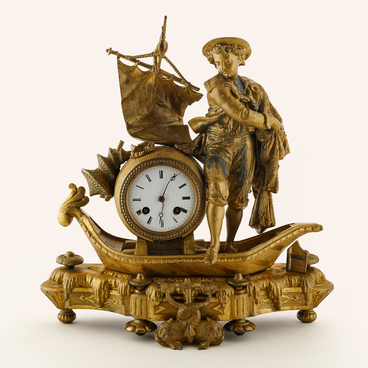The museum’s exhibition includes a sculptural image of the Scottish writer, poet and historian Walter Scott. This work is a copy of the portrait bust of the writer, which was made by Francis Leggatt Chantrey in 1820.
The pectoral bust features the head of the writer turned three-quarters of the way to the right. On the front and back sides, the sculpture is cut in a semi-oval shape. In the center, the bust passes into a cylindrical pedestal, which rests on a round base stand. The bust and the base are hollow inside. The clothes of the writer are represented by a cloak, which falls in soft folds and shows the pattern of the fabric, the chest is closed, there is a pin buckle at the left shoulder. The hair is slightly wavy, with relief streaks.
From Scott’s diary entries we know that on March 12, 1820, he greeted King George IV on the occasion of his accession to the throne in London. In the same year Scott was granted the title of baronet, which allowed him to write “sir” before his name. The king commissioned the artist Thomas Lawrence to paint a portrait of Scott for the gallery at Windsor Castle, and the sculptor Francis Chantrey worked on a bust of him.
Walter Scott’s daughter called this sculpture the best lifetime depiction of the writer. The original sculpture was made of marble.
Walter Scott is considered the inventor of the historical novel. In Russia, the writer became known in the 1820s.
Russian literary critic and theorist Vissarion
Grigorievich Belinsky wrote about the work of the writer,


